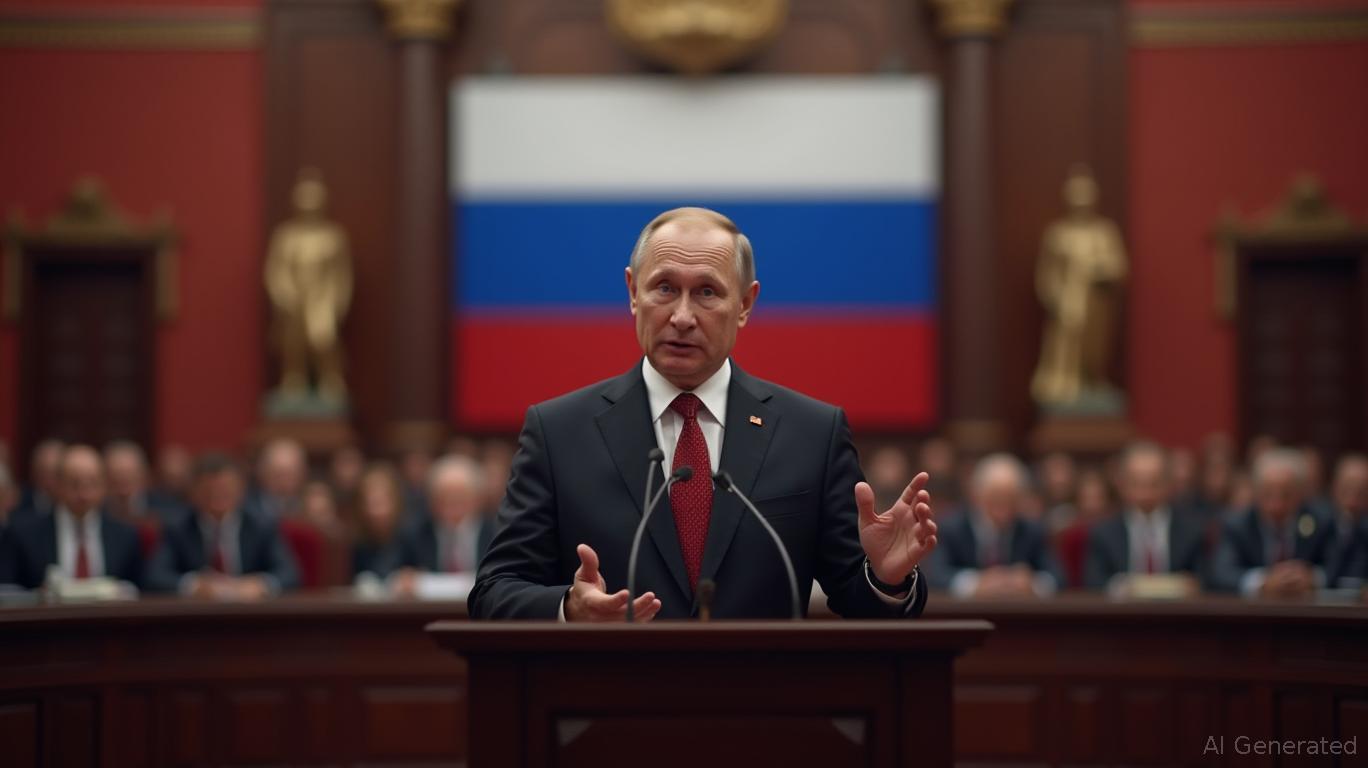Fortress Ruble: Russia Closes Crypto Access to Bolster Digital Independence
- Russia's central bank bans domestic crypto payments, prioritizing its digital ruble CBDC launch by 2026 to reinforce financial sovereignty. - Stablecoins are allowed for international trade but prohibited domestically, balancing innovation with central bank control over monetary policy. - The policy aims to prevent crypto-driven financial instability, restrict domestic crypto use to speculation, and align with China's state-controlled CBDC model. - Critics argue the ban stifles innovation, while proponen
The Bank of Russia has reiterated its opposition to the use of cryptocurrencies for payments within the country, making it clear that it is prioritizing the rollout of its own digital ruble as it seeks to strengthen its grip on the national financial system. In a recent statement, Governor Elvira Nabiullina stressed that crypto assets are incompatible with Russia’s control over its monetary system, explaining, "Cryptocurrency cannot be used for payments within Russia" due to the absence of regulatory controls. This stance is consistent with ongoing plans to introduce the digital ruble, Russia’s central bank digital currency (CBDC), by autumn 2026.
The policy specifies that stablecoins—digital tokens tied to traditional currencies—are allowed for cross-border payments and foreign investments but remain off-limits for domestic transactions, according to a

This policy reflects international worries about the dangers posed by private digital currencies. Nabiullina pointed out that unregulated crypto activity could threaten the stability of Russia’s banking sector and undermine trust in the ruble. With around 20 million Russians reportedly holding more than $10.15 billion in crypto assets as of early 2025, the prohibition confines these assets to speculative or international purposes, excluding them from routine domestic transactions.
At the same time, the digital ruble project is gaining traction. The central bank sees the CBDC as a means to upgrade payment infrastructure, decrease dependence on foreign currencies, and broaden access to financial services. By taking exclusive control of digital payments within Russia, the bank aims to avoid disruptions from decentralized technologies and keep pace with the global move toward CBDCs.
This approach also addresses proposals from Russian lawmakers, such as Senator Artem Sheikin, who has called for a regulated framework for a stablecoin linked to the ruble, as noted by Yahoo Finance. Nevertheless, the central bank has chosen a government-led model over private sector alternatives. This mirrors China’s digital yuan policy, which favors centralized management to safeguard economic order.
Some critics believe the ban restricts consumer options and could hinder crypto innovation. However, supporters within the administration argue that these measures are essential to combat illegal financial activities and uphold the ruble’s leading role in the domestic economy. The central bank’s prudent approach stands in contrast to more liberal policies in places like Germany, where open banking services such as Tink have enabled crypto payments via bank transfers, according to
As Russia prepares to launch the digital ruble in 2026, its policy underscores the ongoing struggle between adopting new financial technologies and protecting established financial systems. Although the ban on crypto payments at home may face resistance from a tech-savvy public, it reinforces the central bank’s authority over digital currency in Russia. This decision may also set a precedent for other countries facing similar regulatory challenges as stablecoins and CBDCs continue to transform global finance.
Disclaimer: The content of this article solely reflects the author's opinion and does not represent the platform in any capacity. This article is not intended to serve as a reference for making investment decisions.
You may also like
Progressive Approaches Versus Tough-on-Crime: New York City's Mayoral Election Faces an Ideological Turning Point
- NYC mayoral race tightens as socialist Mamdani leads polls over Cuomo and Sliwa, with Trump endorsing Cuomo as "worse" leftist. - Pro-crypto group backs Cuomo for blockchain policies, contrasting Mamdani's focus on affordability and wealth taxation. - Trump's "communist" attacks and funding warnings polarize race, framing it as ideological battle between progressive and centrist agendas. - Election outcome will determine NYC's governance direction, with Mamdani seeking historic first Muslim mayor role am

Ethereum News Today: Ethereum's Fusaka or Solana's Rapid Rise: Which Will Shape the Future of DeFi?
- Ethereum's Fusaka upgrade (Dec 3) aims to boost scalability via 12 EIPs, including EIP-7594 for Layer 2 efficiency, while Solana challenges ETH's dominance with faster transaction speeds. - Coinbase added 11,933 ETH to reserves and expanded into prediction markets, contrasting with BTCC's $29B RWA futures volume bridging traditional and crypto markets via USDT. - USDC/EURC stablecoins reached $75B supply and 35M users, driven by Ethereum's Layer 2 networks, while Ripple's RLUSD hit $1B market cap on Ethe

Dormant Bitcoin whale deposits 2,300 BTC into Paxos, holds over 32,000 BTC worth $3.4B

Bitcoin Updates: Altcoin ETFs and Regulatory Actions Put Pressure on Bitcoin’s Bullish Outlook Amid Changing Crypto Environment
- Bitcoin's bull case weakens as institutional capital shifts to altcoins via ETFs, despite 56% lower fees and $108k price. - SEC's five new altcoin ETF applications and Ethereum's $9.6B Q3 inflows signal regulatory-driven capital reallocation. - Saylor's $150k Bitcoin forecast clashes with Schiff's criticism of unrealized gains, highlighting market ideological divides. - Miners pivot to AI infrastructure (e.g., IREN's $9.7B Microsoft deal) as crypto's future hinges on ETF flows and regulatory clarity.
